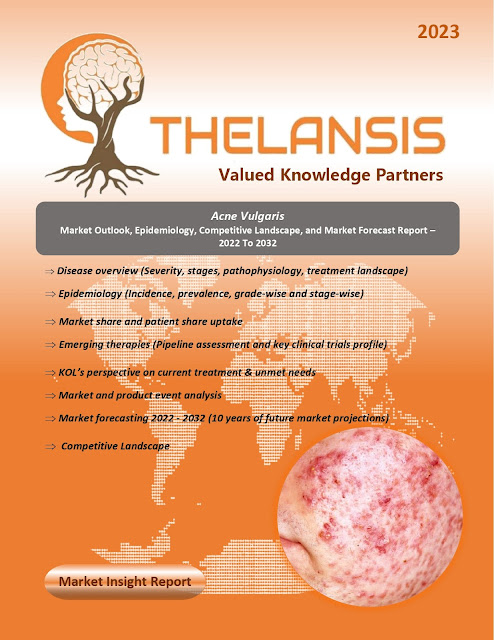Influenza B – Market Outlook, Epidemiology, Competitive Landscape, and Market Forecast Report – 2023 To 2033
Influenza B is a prevalent respiratory infection. Approximately 20-30% of diagnosed cases of influenza viral infections can be attributed to the influenza B virus. Similar to the influenza A virus, the influenza B virus belongs to the family Orthomyxoviridae. Both viruses possess segments 1, 3, 4, and 5, denoted as FLUA and FLUB, which encode a single protein per segment: PB2, PA, HA, and NP proteins. However, there are a few notable distinctions in influenza B viruses. For instance, segment 2 of FLUAV encodes the polymerase subunit PB1. In certain strains, this segment may also encode a small accessory protein called PB1-F2, which exhibits apoptotic activity. Influenza B viruses are classified into two lineages: B/Yamagata and B/Victoria. Additionally, IFB viruses are further categorized into specific clades and sub-clades. The B/Victoria clades encompass V1A, while the subclades consist of V1A.1, V1A.2, and V1A.3. The B/Yamagata clades encompass Y1, Y2, and Y3, without any subclades. IFB infections can manifest in various ways, such as croup, bronchiolitis, pneumonia, and febrile illness, which can mimic bacterial sepsis. Moreover, complications can arise affecting the central nervous system, heart, muscles, or kidneys. The most common presentation of IFB is a respiratory infection characterized by cough, fever, myalgia, chills, and malaise. The illness typically spans two to eight days, with a rapid onset. A minority of patients, especially young children and those with medical comorbidities, may have a severe form. The prognosis for children affected by IFB is generally favorable. Hospitalization may be required for two to eight days in some cases.
- According to estimates, the United States has faced a considerable burden of influenza, with around 9 million cases of flu, 4 million flu-related medical visits, 100,000 hospitalizations, and approximately 5,000 deaths.
Thelansis’s “Influenza B Market Outlook, Epidemiology, Competitive Landscape, and Market Forecast Report – 2023 To 2033" covers disease overview, epidemiology, drug utilization, prescription share analysis, competitive landscape, clinical practice, regulatory landscape, patient share, market uptake, market forecast, and key market insights under the potential Influenza B treatment modalities options for eight major markets (USA, Germany, France, Italy, Spain, UK, Japan, and China).
KOLs insights of Influenza B across 8 MM market from the centre of Excellence/ Public/ Private hospitals participated in the study. Insights around current treatment landscape, epidemiology, clinical characteristics, future treatment paradigm, and Unmet needs.
Influenza B Market Forecast Patient Based Forecast Model (MS. Excel Based Automated Dashboard), which Data Inputs with sourcing, Market Event, and Product Event, Country specific Forecast Model, Market uptake and patient share uptake, Attribute Analysis, Analog Analysis, Disease burden, and pricing scenario, Summary, and Insights.
Thelansis Competitive Intelligence (CI) practice has been established based on a deep understanding of the pharma/biotech business environment to provide an optimized support system to all levels of the decision-making process. It enables business leaders in forward-thinking and proactive decision-making. Thelansis supports scientific and commercial teams in seamless CI support by creating an AI/ ML-based technology-driven platform that manages the data flow from primary and secondary sources.



%20Market%20Outlook%20and%20Forecast.webp)
Comments
Post a Comment